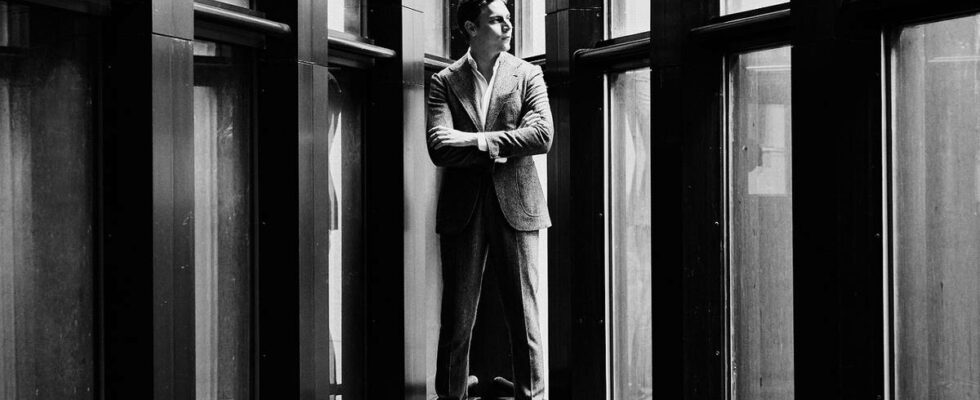Dmitri Shostakovich was the most iconic composer ever fostered by the powerful and fearsome Soviet Union. Despite limited artistic freedom of expression in an authoritarian communist dictatorship, he managed to create music with enormous expressive power. THE GREATEST OF THE SOVIET RUSSIANS: Dmitri Shostakovich (1906–1975). Many Soviet Russians experienced that Shostakovich thematized and processed suffering and state terror that otherwise could not be discussed openly. Photo: Deutsche Fotothek/Wikimedia Commons Shostakovich’s most important legacy is the 15 symphonies composed between 1925 and 1971. This makes him the last great symphonist in the Western tradition. To record all these symphonies on disc – about 12 hours of music in total – is a huge achievement. Nevertheless, this is exactly what the Oslo Philharmonic and chief conductor Klaus Mäkelä have embarked on, on the prestigious brand Decca. The first album out shows an orchestra and a conductor who are fully up to the situation, and rightly so. HUGE TASK: The Oslo Philharmonic and their conductor bring Shostakovich up to date with a dedication. They will record 15 symphonies in total. Photo: John-Halvdan Olsen-Halvorsen Musical line dance It is hardly a coincidence that star conductor Klaus Mäkelä and the Oslo Philharmonic choose to begin their series of recordings of Shostakovich’s complete symphonies with precisely numbers 4, 5 and 6. As a trilogy, these symphonies chronologically cover the most critical phase in Shostakovich’s relationship with the Stalin regime, and at the same time the most horrific years in the history of the Soviet Union. It is inevitable not to hear this music as both autobiographical and as a chronicle of deep wounds inflicted on the soul of the Soviet people. THE MAN OF STEEL: Josef Stalin was the leader of the Soviet Union 1924–1953. During his communist regime, hundreds of thousands died in the worst purge years. Photo: SCANPIX This particularly applies to Symphony No. 5 in D minor, which was the composer’s public penitential exercise after being attacked in the Communist Party’s newspaper Pravda in 1936. With a gun aimed at his temple, Shostakovich managed to compose his masterpiece, a symphony that both satisfied the regime’s demands, and at the same time appeared to any upbeat listener as an expression of the individual’s grief at the capitulation to a brutal superior force. Hear critic Eystein Sandvik tell the dramatic story and play music in Studio 2: The premiere in Leningrad in November 1937, at the height of Stalin’s purges, unleashed a tidal wave of emotion. Many in the hall burst into tears loudly. Sober and thoughtful, Shostakovich’s symphonies are characterized by extreme contrasts in emotion. Not least this applies to the modernist Symphony No. 4 in C minor (1936), which Klaus Mäkelä drives up to a hair-raising climax in the gigantic first movement. All in all, however, it is a relatively sober and thoughtful Shostakovich we meet on the record. The outer movements in Symphony No. 5, for example, have a significantly more moderate tempo than what we find on the orchestra’s previous, somewhat legendary, recording under Mariss Jansons from 1987. PLAYED IN OSLO: The Oslo Philharmonic, here with oboist Sigurd Greve, played one of the symphonies in the concert hall to celebrate his own record. Photo: John-Halvdan Olsen-Halvorsen / Oslo Philharmonic On the whole, Mäkelä steers clear of extremes, without this resulting in the music being perceived as underplayed. On the contrary, this is a Shostakovich that wins in emotional power by not being painted in too poster-like colours. The exception is the muted opening section of the Fifth Symphony’s first movement, which lacks an element of unresolved tension before the drama really gets going. In my opinion, Mäkelä succeeds best in the enigmatic Symphony No. 6 in B minor (1939), where Shostakovich breaks with all expectations of traditional and “constructive” symphonic form. Mäkelä keeps the long and desert-like first movement on a knife’s edge, and manages to create a rare experience of almost total stillness, as if the music is hovering between life and death. At the same time, this is one of many movements in these three symphonies where several of the Oslo Philharmonic’s individual musicians step forward in an exemplary manner. Shostakovich is fond of adding melodies to solo wind instruments, especially from the woodwind range. Without exception, these are shaped insightfully and poignantly. MÄKELÄ AND THE MUSICIANS: On flute Ting-Wei Chen, oboe: David Strunck, clarinet: Leif Arne Tangen Pedersen, and bassoon: Ole Kristian Dahl, just some of the musicians who shape the music poignantly. Photo: John-Halvdan Olsen-Halvorsen / Oslo Philharmonic Place on the shelf Something needs to be done before I scrap my old favorites in favor of younger challengers when it comes to Shostakovich. The Russian conductors Kirill Kondrashin and Yevgeny Mravinsky premiered many of his symphonies, both with a rawness and depth in their interpretations of the master’s works that posterity has never been able to match. At the same time, there is no conclusion as to how these works should be played, and a look from the outside can reveal aspects that the inner circle was less aware of. Stalin and Brezhnev are history, and much politics and music have flown into the sea since Dmitri Dmitrievich put down his pen in 1975. The Oslo Philharmonic and Klaus Mäkelä have taken up the task of updating Shostakovich with seriousness and dedication. The result is an album that I will be listening to more, while I eagerly await the sequel. news reviews Photo: Decca Classics Title: “Schostakovich Symphonies 4, 5, 6” Artist: Klaus Mäkelä, Oslo Philharmonic Date: 14 August 2024 Record company: Decca Classics Published 03/09/2024, at 19.22
ttn-69
“Shostakovich Symphonies 4, 5 & 6” by the Oslo Philharmonic Orchestra – news Culture and entertainment

